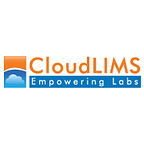Overcome Challenges in Cancer Research & Improve Decision-Making Using a Cloud-Based Informatics Solution
The fight against cancer has remained a great challenge for patients, their families and physicians as well as oncology researchers due to the dynamic and versatile nature of the disease. To date, there are over 100 different types of cancer that have been identified and they affect different cells in the body. They include carcinomas, sarcomas, leukemias, myelomas, melanomas, and lymphomas among others. Consequently, oncology researchers are constantly dealing with an avalanche of data and metadata (e.g., omics data or radiology data), which require robust infrastructure to collect, manage and interpret. It becomes even more difficult when these data sets have to be shared across different teams while maintaining compliance and other industry standards.
Why is Cancer Research Important?
Cancer research involves the discovery of cancer biology and genetic diversity and translating this knowledge to improve cancer therapy. Often, this involves the use and reuse of data from disparate sources (databases and samples). It may be necessary to get this data on one streamlined platform to allow oncology researchers faster access to the data and also facilitate collaboration, compliance, and maximize the value of research. This helps shorten the time to diagnosis and treatment and expedite the entry of drugs into the market.
Cancer treatment, from diagnosis to treatment, is always a race against time.
Cancer research sites and institutions often have limited access to research staff, facilities, and study participants or samples. Therefore, it is necessary to form networks where data, knowledge and samples can be shared collaboratively which is often a massive undertaking that requires advanced technological solutions. Multiple technical interfaces (interoperability) have to come in place since the data is usually found in varying documentation systems and at different sites. Data privacy, in this case, can be easily compromised if adequate measures are not put in place. Hence, appropriate technological solutions for pseudonymization have to be created and integrated into existing workflows to support compliance as well as yield acceptable and reproducible research results. Modern IT solutions can be used to help cancer research laboratories to maximize the value of cancer research.
As much as IT solutions will not necessarily cure patients; advances in medical IT research will go a long way in accelerating cancer research and facilitate timely treatments and consequently improve patient outcomes. With all forms of cancer, time is always of the essence.
How can a LIMS Help with Cancer Research?
The prototypical nature of cancer research requires the processing and integration of datasets in a robust technological environment. An appropriate LIMS for Cancer Research should support the whole process from tissue and sample collection and annotation to data analysis and reporting. A LIMS helps to collate data from multiple sources and studies without data redundancy, providing researchers access to high-quality data for fast decision-making. A LIMS for cancer research also helps in automating and monitoring complex workflows and flags steps that deviate from defined SOPs.
A LIMS for cancer research should be flexible, adaptive, and compliant. It needs to be able to manage data flow across different disciplines and allow the researchers to easily share and receive data, metadata, and results with other researchers in real time.
Integrating a LIMS with the different instruments such as DNA sequencers, visual tools, and other software, such as EMR, EHR, pathology systems, statistical tools, will provide the oncologist with a holistic view of the cancer patient in a real-life situation.
Ensuring Compliance in Cancer Research
Compliance is a top priority for every cancer laboratory. The Health Insurance Portability and Accountability Act (HIPAA) regulates the use and sharing of protected health information such as data related to the operation of cancer registries and registry-supported cancer research.
The lab’s LIMS should support the HL7 standards for data exchange in the cancer research industry. It also helps with consent management and meeting HIPAA requirements for safeguarding patient privacy & IRB protocols for tissue acquisition and data sharing.
Conclusion
With the complexity of cancer research and treatment, researchers can easily get overwhelmed by the multiform data that they are required to process. Deciphering the significance or irrelevance of data and metadata and drawing conclusions from the generated data sets requires the support of an intelligent and automated LIMS software. Such a software offers broader insights that can easily be translated into therapy at a faster turnaround time.
A cloud-based LIMS that manages large datasets and facilitates data access, visualization, analysis, and transmission can be integrated with other systems to facilitate informed decision-making. A cloud solution, besides storing data, may be able to execute algorithms that can be used by other researchers to gain insights from data without needing deep technical knowledge. This data can be easily accessed from different sources and locations at any given time, thereby overcoming the time constraints which is a major challenge in cancer research. This, hopefully, will speed up the decision-making process, improve patient outcomes, and clinical care of patients.
Originally published at https://cloudlims.com.
